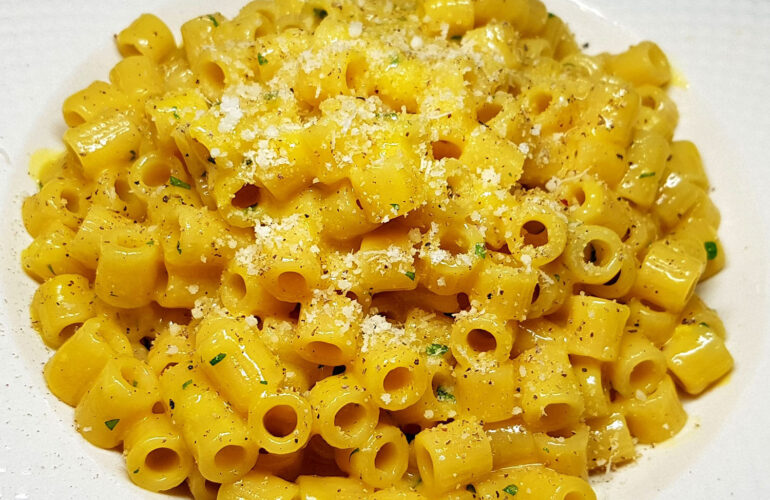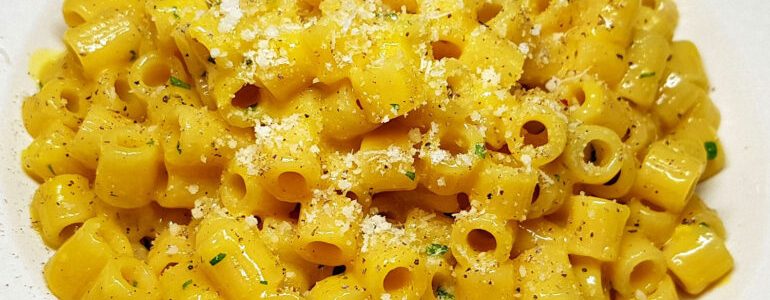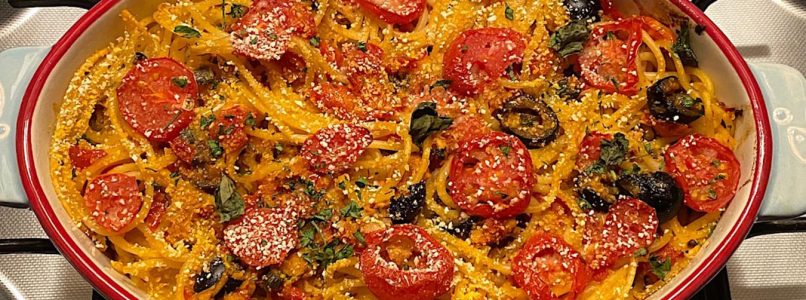
Homemade pasta and eggs it is the recipe of a grandmother, Grandma Divina, who remained in the hearts of her grandchildren. A simple and homemade recipe that the kids loved very much and that today they prepare themselves. Today via social media it can also arrive in our homes, for a novelty with an ancient flavor and full of memories. The ingredients you need to make this dish are: few and easily available. We only recommend a nice bunch of fresh parsley. Involve the little ones in the procedure of breaking the spaghetti, they will never forget it.
Homemade pasta and eggs
Ingredients
- spaghetti 240 g
- eggs 4
- parmigiano reggiano 100 g
- parsley 1 bunch
- salt
- black pepper
Preparation
The first thing to do to prepare Grandma Divina’s homemade pasta and eggs is to put the water for the pasta on the heat together with the bunch of parsley. While you wait for it to boil, prepare the cream cheese. In a bowl, combine the eggs, the grated Parmigiano Reggiano and a generous sprinkling of black pepper. Mix everything together using a fork. Once the mixture has been prepared, wrap the spaghetti in a cloth and break them into pieces with your hands. Salt the water and when it reaches the boil, add the spaghetti. Drain them 3 minutes before the time indicated on the package.
Drain the excess water from the pot, but leave a little, just enough to be level with the spaghetti. Pour in the egg and cheese mixture. Over low heat, continue cooking for 1 minute. You have to stir continuously to best distribute the ingredients. Once ready, cover with the lid and let it rest for 4 minutes. Serve and complete with a final sprinkling of pepper. Your grandmother Divina’s homemade pasta and eggs ready. Enjoy your meal.


